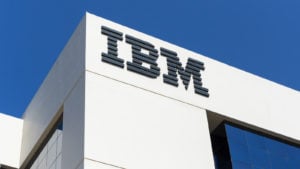
10 Value Stocks to Buy From the Vanguard U.S. Value Factor ETF
Value stocks could be ready to make a comeback in the second half of 2020
Goldman Sachs’ chief U.S. equity strategist, David Kostin, recently stated that the gap between cheap stocks and expensive stocks, except for the tech bubble of 1999, has never been wider. He believes there are value stocks to buy once the economy regains its footing.
Value stocks have gone out of fashion; it’s hard to remember when these stocks outperformed growth stocks.
According to MarketWatch contributor Brett Arends, the last time was between 2000 and 2006, when value stocks delivered a total return of 15% compared to a 40% decline for growth stocks. However, you have to go back even farther, to the period of 1975 to 1988 to get a period where stocks with the value profile gave growth stocks a real smackdown. In those 13 years, value stocks had a total return of 300%, more than double the 115% total return for growth stocks.
With value stocks failing to deliver the goods for more than 30 years, the contrarian in me continues to believe value stocks will soon gain their rightful place in the investor’s playbook.
But which value stocks to buy?
To help with the selection process, I thought I would pick 10 value stocks from the Vanguard U.S. Value Factor ETF (NYSEARCA:VFVA), one of Vanguard’s few actively managed exchange-traded funds.
- CVS Health (NYSE:CVS)
- Comcast (NASDAQ:CMCSA)
- Philip Morris International (NYSE:PM)
- FedEx (NYSE:FDX)
- Micron Technology (NASDAQ:MU)
- Berkshire Hathaway (NYSE:BRK.A, NYSE:BRK.B)
- IBM (NYSE:IBM)
- PulteGroup (NYSE:PHM)
- AutoNation (NYSE:AN)
- Target (NYSE:TGT)
May the best value stocks win!
Value Stocks to Buy: CVS Health (CVS)

The average price-to-earnings ratio of the 859 stocks in VFVA is 8.8, less than half the Russell 3000 benchmark of 20.6. CVS Health’s current P/E is 11.5.
Despite CVS staying open throughout the novel coronavirus, CVS stock has generated a negative total return of 13.4% year to date, 500 basis points worse than the Morningstar U.S. Market Index.
CVS continues to expand its health hub concept despite the pandemic. It expects to have 1,500 of these stores open within the next two years. It opened 50 in 2019, another 50 or so have opened so far in 2020 with plans to open as many as 650 in 2020, and the remainder in 2021.
CVS reported excellent first-quarter earnings in early May with $66.8 billion in sales (8.3% higher year over year) and $2 billion in profits (41% higher year over year). Both the top-line and bottom-line beat analyst expectations.
It did admit the second-quarter results wouldn’t be nearly as rosy. Long-term, however, CVS remains an excellent value play.
Comcast (CMCSA)

Comcast is the 12th-largest position in Vanguard’s ETF. The cable company’s current P/E is 15.5. While high, it’s still less than the Russell 3000.
The good news from Comcast’s Q1 2020 report is the fact it made $2.1 billion on $26.6 billion in revenue. The bad news is that it made $3.5 billion a year earlier. However, on an adjusted basis, it made $3.3 billion, just 6% lower than in Q1 2019.
The cable and wireless business have been going strong during the pandemic, but NBCUniversal, both in terms of its film entertainment division and its Universal theme parks, have been hurt by the slowdown. The company expects that NBCUniversal could see even worse numbers in the second and third quarters of 2020.
Overall, however, Comcast increased its customer base by 2.6% during the first quarter, which is the name of the game.
Comcast will rise above the issues it currently faces, but in the meantime, investors could see its stock fall further in 2020, providing an even better entry point for a long-term hold.
Philip Morris International (PMI)

Philip Morris International is the 16th-largest position in Vanguard’s ETF. Its current P/E is 14.4. Believe it or not, that’s a much lower multiple than its five-year average of 20.5.
The cigarette companies have always been known for two things: free cash flow and dividends. In the trailing 12 months, its free cash flow is $9.3 billion. Based on an enterprise value of $134.4 billion, it has an FCF yield of 6.9. I consider anything above 8 to be a real value buy. It’s very close.
In the latest quarter ended March 31, Philip Morris paid out $1.83 billion in dividends. The company’s current dividend yield is 6.6%. It generates plenty of free cash flow to keep paying its $1.17 quarterly dividend.
The company continues to make strides with its IQOS smoke-free products. It had 14.6 million IQOS users at the end of March, up from slightly more than 10 million users in Q1 2019.
If you can handle owning a stock that kills people, Philip Morris remains one of the best value stocks you can pick up today.
FedEx (FDX)

FedEx is the 23rd-largest position in Vanguard’s ETF. In the trailing 12 months, FedEx had a net loss of $350 million. Therefore, while it doesn’t have a current P/E ratio, the consensus forward P/E is 11.3, well below its historical five-year average.
FedEx suffered in recent years from its association with Amazon (NASDAQ:AMZN), which pressured margins and alienated most other retailers. Now that it has cut Amazon from its customer roster, it is free to grow its ground investments without worrying about Seattle’s finest.
On May 18, FedEx and Microsoft (NASDAQ:MSFT) announced a multi-year partnership that will see it utilize Microsoft Azure and Dynamics 365 to improve its customers’ supply chains. The first product from the collaboration is FedEx Surround, which gives its customers near-real-time shipment tracking analytics.
“FedEx has been reimagining the supply chain since our first day of operation, and we are taking it to a new level with today’s announcement,” FedEx CEO Fred Smith said in its press release announcing the partnership.
FDX stock has underperformed for several years. This latest announcement appears to be the beginning of a comeback.
Micron Technology (MU)

Micron is the 27th-largest position in Vanguard’s ETF. Its current P/E ratio is 21.9, higher than the Russell 3000, but not exceptionally high for a tech stock. For example, Nvidia’s (NASDAQ:NVDA) current P/E is 65.8, three times Micron’s.
Micron, unlike its peers, is not having a good year in the markets. Year to date, it has a total return of -15.9%, well below its semiconductor peers, which are down only 1.1% over the same period.
Part of the problem for Micron is that it does a lot of business with Huawei, which is on the U.S. Entity list, and that prevents U.S. companies from shipping certain products to China. Before it was added to the list, Micron generated 13% of its business from Huawei. That’s now down to 10% and falling.
Fear not, suggests Needham analyst Rajvindra Gill, the company has plenty of tailwinds to keep it growing, including the ongoing transition by companies to permanent work-at-home situations, a move that helps on several fronts: “Net, the shares are trading at approximately 1.4x its current tangible book value, still well below its median 1.7x-2x multiple range, making the shares relatively inexpensive at current levels.”
Berkshire Hathaway (BRK.A, BRK.B)

Berkshire Hathaway (NYSE:BRK.A, NYSE:BRK.B) is the 29th-largest position in Vanguard’s ETF. Its current P/E ratio is 44.1, higher than the Russell 3000. However, the holding company nature of Berkshire makes the figure slightly irrelevant.
For example, because it has so many equity positions, whose gains and losses must be accounted for each quarter, the company’s GAAP losses rise and fall with great regularity.
In the first quarter, due to the mid-March meltdown, Berkshire reported a $49.7 billion loss, down from a $21.7 billion profit a year earlier. In the first quarter, it had $55.6 billion in investment and derivative losses. That compares to $16.1 billion in investment and derivative gains in Q1 2019.
The number you want to look at is operating earnings. In the first quarter, Berkshire’s operating earnings were $5.87 billion, 5.7% higher than the same period a year earlier.
The company’s insurance operations drove its operating earnings higher. In the first quarter, its insurance business generated $2.1 billion in pre-tax earnings, almost 17% higher than a year earlier. Geico and its many other insurance subsidiaries are the foundation upon which everything else is built.
BRK.B stock is trading at the same price it did in July 2017, almost three years ago. With all its cash, at some point, Warren Buffett will start buying in earnest.
IBM (IBM)

IBM is the 36th-largest position in Vanguard’s ETF. Its current P/E ratio is 11.8, almost half the Russell 3000 and less than its five-year average.
I’ve not been a fan of IBM stock in recent years. Nor have I been very supportive of former CEO, Ginni Rometty, who I thought was severely overpaid for what she delivered to shareholders over her eight-year tenure.
In January, I suggested that activist investors ought to be all over IBM. One of the moves to be made by any activist would be to replace Rometty. On January 30, IBM announced that Rometty would step aside as CEO and become Executive Chairman until the end of 2020.
Since the announcement, IBM stock has continued to fall, down 13% between January 30 and May 22.
On May 21, CEO Arvind Krishna announced job cuts that are thought to be in the thousands, as the company continues to pivot to the cloud. With more than 350,000 employees worldwide, job cuts seem like an easy target for a new CEO.
The tough part for Krishna will be to get IBM growing again. With Rometty out of the way, maybe it can. Either way, it makes its place on this list of value stocks due to its potential now.
PulteGroup (PHM)

PulteGroup is the 51st-largest position in Vanguard’s ETF. Its current P/E ratio is 8.6, much less than the Russell 3000 and less than its five-year average.
During a pandemic, it’s hard to sell homes, new or resales. Pulte saw an 11% decline in orders for new homes in March. In January and February, they were up 30% year over year. Overall, the first quarter saw orders increase by 16%.
In April, Pulte said demand dropped by 50% compared to the first quarter. In the first week of March, it had new orders of more than 800. By the last week of March, new orders had fallen to 140.
Like many companies, the second-quarter results will likely be worse than the first. It’s unavoidable.
However, the company entered the pandemic in excellent financial health with a backlog of more than 12,600 homes worth $5.6 billion. That said, the company will be making fewer land acquisitions over the next few months to preserve as much as cash as possible.
Down 15.4% year to date, now is an excellent time to get in on one of America’s largest homebuilders.
AutoNation (AN)

AutoNation is the 75th-largest position in Vanguard’s ETF. Its current P/E ratio is 28.9, much higher than the Russell 3000. However, if you look at some of its other valuation metrics as compared to its five-year averages, you’ll see that for the most part, it’s cheaper today than it has been in some time.
Selling new cars is going to be tough for the foreseeable future as consumers refuse to open their wallets for big-ticket expenditures.
“Shelter in place was not in any of our business plans” AutoNation CEO Mike Jackson told CNBC in mid-May. “We had the most rapid decline in business, far exceeding the Great Recession or anything else, where the business collapsed and literally, in a matter of days, we were down 50% on vehicle sales.”
In the first quarter, AutoNation announced a $232 million loss, a significant turn in the wrong direction from last year’s first quarter when it made $92 million. On the top line, sales fell 6.3% in Q1 2020 to $4.7 billion.
However, CEO Mike Jackson is optimistic that sales are recovering. And with that recovery, AN stock ought to be able to claw its way back to $50 where it started the year.
Target (TGT)

Target is the 87th-largest position in Vanguard’s ETF. Its current P/E ratio is 22.1, which is higher than the Russell 3000. However, based on an enterprise value of $71.3 billion and trailing 12-month free cash flow of $4.1 billion, it has a free cash flow yield of 5.7%, which means investors are getting growth at a reasonable price, if not an outright value buy. As such, I still place it among other value stocks for consideration.
In the first quarter, Target’s online sales grew 141% from last year, with sales accelerating from a 33% increase in February to a 282% increase in April. While these percentage increases won’t continue forever, it gives the company’s online business, an opportunity to show what it can do.
“[O]n an average day in April, our operations were fulfilling many more items and orders than last year’s Cyber Monday, a day for which we had planned months ahead of time,” CEO Brian Cornell said in the company’s Q1 2020 conference call. “In contrast, this unprecedented surge in volume was completely unexpected at the beginning of the quarter, and it ramped up from normal trends in a matter of weeks. And by design, it was our stores that enabled the surge in digital volume, fulfilling more than 80% of our digital sales in April.”
I would bet dollars to donuts that it gains new customers from this pandemic. That’s excellent news if you already own TGT stock or are on the search for stand-out value stocks to buy.
Will Ashworth has written about investments full-time since 2008. Publications where he’s appeared include InvestorPlace, The Motley Fool Canada, Investopedia, Kiplinger, and several others in both the U.S. and Canada. He particularly enjoys creating model portfolios that stand the test of time. He lives in Halifax, Nova Scotia. At the time of this writing Will Ashworth did not hold a position in any of the aforementioned securities.